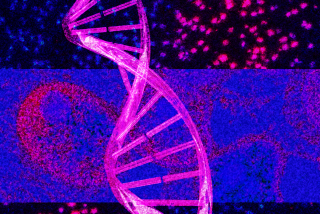Taller Timber at the Salt Lake Library
- Share via
“Since 1985 the Family History Library has nearly doubled its annual rate of microfilming original sources,” David M. Mayfield, director of the genealogical library in Salt Lake City, said recently.
The library now has 175 microfilming projects in 40 counties, and in 1988 alone completed about 85 million exposures of original records which list an estimated 700 million deceased persons throughout the world, he said.
Last year the major acquisitions for this library in the U.S. and Canada sections alone included: 745,000 files of federal passport applications (1795-1918), 1.8 million cards of Canadian border crossings (1895-1924), a portion of the 24 million World War I draft registration cards, selected federal district and circuit court naturalization records, compiled Confederate service records, plus records in 94 county courthouses and six state archives.
There is high priority on acquiring parish registers dating back to the early 1500s in the British Isles. Recent acquisitions include: a general probate index for all English courts (1812-1858); post-1858 probate documents, including indexes for all of England and Wales (1858-1957); civil registration indexes of births, marriages and deaths (1837-1980); Scottish probate indexes (1846-1935); records of Royal Marines and other seamen (1755-1900) and about half of the Irish Catholic church records (1780-1880).
The 1988 edition of the International Genealogical Index is now available in family history branches worldwide. It contains the names of more than 147 million people dating back to the early 1500s. The new edition includes 19 million names extracted primarily from birth and marriage records of North America--including 2.3 million from Massachusetts, 2.3 million from Ohio, 987,000 from Tennessee, 942,000 from New York, 81,000 from Pennsylvania and 86,372 from Minnesota.
Now in its sixth year, the Family Registry includes nearly 260,000 entries. These consist of individuals, mostly from North America, who wish to cooperate with others researching specific lines. The Family Registry is on microfiche and also is available at most branch family history libraries. Salt Lake’s Family History Library card catalogue has been converted to an automated system, with most branch libraries now using the 1988 edition of this microfiche catalogue that you use to order microform from the main library.
The main library is developing and testing a patron access to the main library’s card catalogue data which is on compact disks. This computerized access offers some important and quick aids to researchers:
-- When searching for a specific locality you need not know each of the jurisdictional levels (i.e., country, state, county and city); the computer will conveniently lead you to what you are searching for, based on what you already know (city where an ancestor was born, for example).
-- The computer automatically provides cross-references from subject headings that you think of, to those used in the catalogue.
-- When you request a surname search, the computer automatically provides phonetic equivalents of the surname, increasing your chances of finding information filed under various spellings.
-- It automatically searches for key words in the notes and titles of the catalogue records. If you are looking for information on the Case family, the computer will refer you to books about the Midgley or King families in which there is information about Case lines. This access to so-called “hidden genealogies” is of tremendous value to researchers.
-- You can obtain a printout of the information displayed on the computer screen by using the printer.
More to Read
Sign up for Essential California
The most important California stories and recommendations in your inbox every morning.
You may occasionally receive promotional content from the Los Angeles Times.










